Varicose veins are one of the oldest diseases of mankind, this disease is mentioned in the works of Hippocrates, Avicenna and other founders of medicine. Dilation of the venous pathways can occur in different parts of the body and organs that have wide veins. The most common locations are the legs, although they can also form on the stomach, testicles and esophagus. To study the origin of the disease, we first consider the causes of varicose veins.
General information about varicose veins of the lower extremities
Varicose veins are caused by irreversible pathological varicose veins.The problem arises due to changes in the work of the valves responsible for blood circulation in the body, mainly in the lower extremities.
Normal valve function involves, at the moment of relaxation or contraction of muscle fibers, the movement of blood back into the structure. It is characteristic of the disease that the valves no longer close, the outflow of blood decreases, so the veins expand.
With varicose veins, the walls of blood vessels become thinner and weaker. The main problem is the lack of reversibility of the process, that is, even after the restoration of blood circulation, the walls do not return to their original position.
Special attention is paid to this disease due to its wide prevalence, because 1 in 10 men and 1 in 3 women suffer from varicose veins in their 30s and 40s. The highest prevalence of the disease in Europe - up to 40% of the population, the lowest in Asia and Africa - about 0, 1%.
The main causes of varicose veins in men and women
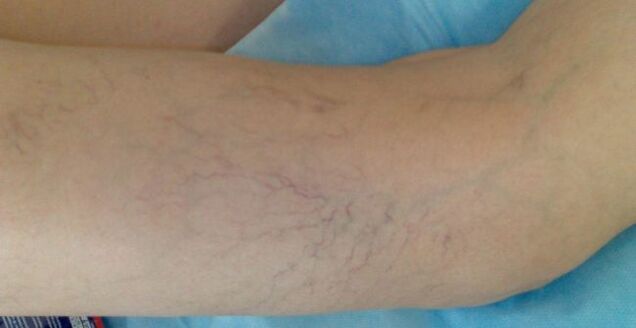
The causes of the development of the disease are very diverse and at first glance unrelated, but these causes have been confirmed by research and are considered reliable. There are 6 main criteria for predisposition to varicose veins, which we will consider in detail.
There are additional, less significant reasons:
- Decreased immunity;
- Injuries to organs or lower extremities;
- Gender plays a rather important role, as evidenced by statistics - women are 3 times more likely to get sick.
hereditary predisposition
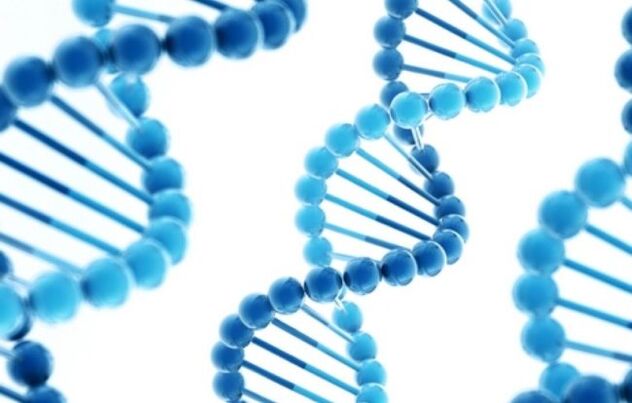
The causes of varicose veins should be considered from genetics, because this cause is present in a third of all patients.If the family has relatives who are susceptible to the disease, then the risk of manifestation in the offspring increases to 70%.The reason is not so much in the familial disease, but in the pathological changes in the structure of blood vessels, built into the genes. It is usually observed:
- Inadequate valves, malfunctions in their work;
- Connective tissue is present in the walls of the veins, it is probably underdeveloped.
For this reason, the disease can be found not only in adults, but also in young girls and boys, as well as children. In men, genetic predisposition causes disease much less often.
Hormones
The reasons for the formation of varicose veins are diverse, but among its diversity, a large share is occupied by hormonal imbalance.The causes of varicose veins in the legs in women are manifested mainly when:
- Pregnancy, childbirth;
- During menstruation or any failures in it;
- menopausal stage;
- The use of drugs that affect the hormonal background of the body, especially in case of overdose.
In men, testosterone is considered a sex hormone, and in women, progesterone, the latter tends to negatively affect the walls of blood vessels, causing a lack of collagen. Ultimately, their tone and elasticity decrease, and the risk of varicose veins increases many times over.
Inflammatory processes
Important prerequisites for the development of the disease are inflammation, mainly in the organs located in the pelvis.Also, when the inflammatory process touches a small vein, increased pressure is produced in broad ways. During the communication between arteries and veins, increased pressure is created, due to which the function of the valve can be defective. Due to the high pressure, the veins dilate, the valves cannot restrain the reverse flow, which causes the formation of knots.
Nerves
The tone in the blood vessels is controlled by nerve endings. With the negative impact on the nervous system from external factors, psycho-emotional state, the nerve center may not fully adjust the valves. After that, the tone decreases and the volume of blood vessels increases.
Sedentary lifestyle
It is this cause of varicose veins that is becoming more widespread, some call it "computer". Muscle fibers contract and cause the release of blood upwards, which is important for normal blood circulation. In a sitting position this does not happen, the speed of metabolism decreases, ie the blood vessels dilate. Also, a sitting position causes clogging of some veins.
When sitting, the person is in a slightly bent position, which causes high pressure in the abdominal region. In turn, from there the blood under great pressure goes to the legs and the work of the valves is irregular. This is especially true for constipation, coughing, sneezing.
Physical exercises
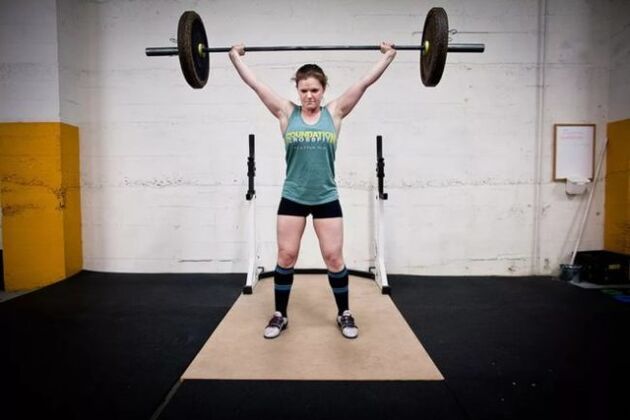
Strong loads on the physical plane lead to an increase in the pressure in the veins.Mostly the problem is not in heavy work, but in static loads, although the transfer of large loads often causes varicose veins.The main reasons are:
- overweight;
- Pregnancy and childbirth;
- Movement with weights;
- Prolonged standing.
Treatment
Varicose veins on the legs should be treated, and in time, then it is possible to reduce the risk of worsening the situation and minimize the manifestations of the disease.Treatment in the initial stages takes place using local medications, after which, in the absence of therapy, surgical intervention may be required.
The causes of varicose veins of the legs and their elimination are considered comprehensively, based on the type of occurrence and the stage of development of the disease. You can determine the best treatment option with the help of an expert who will point you to the appropriate options, but there are no special contraindications for medication.
Creams and ointments
The advantage of using the cream is the ease of application and the effect only on the affected area of the body, and not on the whole body. Fats help relieve pain, normalize muscle condition and prevent degenerative processes in the bloodstream.
The causes of varicose veins in women are often hormonal in nature, while the cream acts locally, externally, so it is possible to achieve:
- Appropriate level of skin nutrition makes it more beautiful and healthier in appearance;
- Creating obstacles in the development of trophic formations, deviations in metabolism;
- Venous disease ceases to progress as blood circulation is restored;
- If varicose veins are accompanied by swelling, then creams can remove them.
Medications

The causes of varicose veins on the legs are usually internal, so they should be dealt with internally or in a complex way.
Drugs have different types of effects on the course of the disease, the following groups are mainly distinguished:
- Phlebotonics - the main effect is to restore tone to the walls of blood vessels. It is considered the main group of prescribed drugs;
- Anticoagulants - prevent blood clotting;
- Decongestants;
- Disaggregants - reduce the ability of blood to form blood clots.
Operation
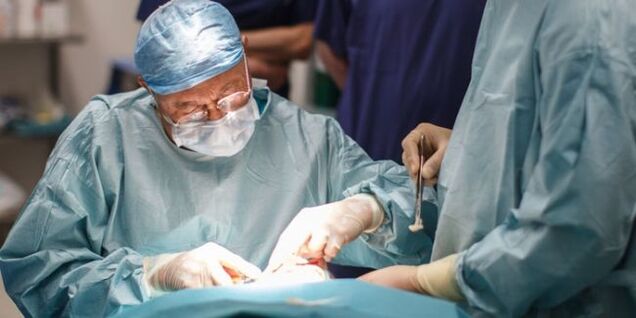
Varicose veins on the legs and other parts of the body have different causes, but regardless of them, the disease tends to progress. There are certain aspects, if the disease has spread beyond them, then conservative treatment rarely has a positive effect. In extreme cases, you must resort to surgery.
Today there are different methods of operation: laser, radiofrequency, miniphlebectomy, etc. Basically, it is possible to simply restore health to the feet or prevent foot disease.
Classification
The causes of varicose veins are different, and thus the form of the disease. It is generally accepted to distinguish several forms and 4 stages of the disease:
- Descending form - the spread of the disease begins from above and gradually descends along the femoral vein, starting from the mouth;
- Ascending form - when the symptoms initially start from the feet and gradually move upwards, the reason for that is the problems with the valves.
The severity of the disease is conditionally divided into 4 categories:
- 0 - the disease is in the phase when the diagnosis does not determine the pathology;
- And - a mild swelling appears, it can feel as if the legs are heavy or "spider veins";
- II - increased edema, especially in the evening, the skin changes color to some extent, eczema;
- III - trophic ulcers, cannot be regenerated.
Danger and complications
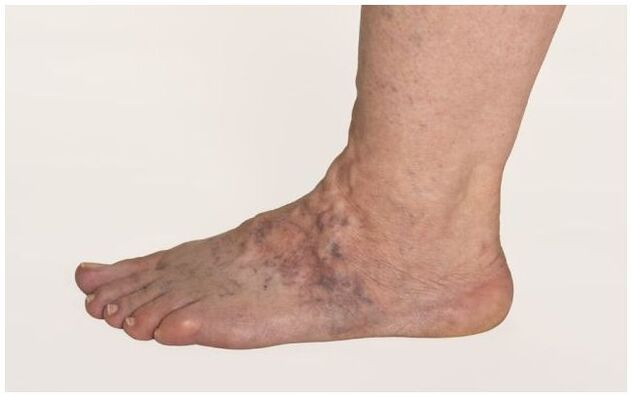
The causes of varicose veins can be individual, which cannot be completely cured, but the therapy should still be carried out.. The main risk of the disease are complications from varicose veins.Dangerous side effects:
- Trophic ulcers;
- Inflammation, especially erysipelatous type;
- Thrombophlebitis - increases the risk of blood clots.
Symptoms of varicose veins
The symptoms of the disease sometimes appear, sometimes a little weak, but in any case it is necessary to treat varicose veins, without waiting for acute manifestations. You can recognize the disease by its characteristic symptoms:
- Heaviness in the legs, increased fatigue, especially often manifested in the evening;
- The color of the veins becomes bluish and bulges slightly. A characteristic manifestation is when, when the limb is raised, everything returns to normal;
- Over time, small nodules or conglomerates may appear;
- Swelling in the area of the feet, ankles, lower legs, legs as if cracking, convulsions often occur;
- As the disease progresses, dry skin is observed, and dark-colored seals are formed;
- Trophic ulcers.
At what stage should you consult a doctor?
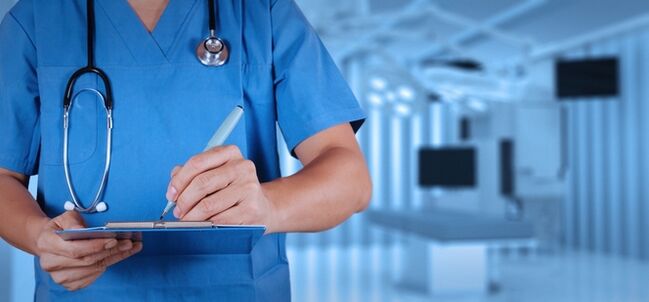
Treatment of varicose veins in women or men should be started as soon as possible.Usually, the patient does not attach much importance to the primary manifestations, but they should not be neglected.
You must consult a phlebologist immediately after discovering the primary symptoms of the disease - a feeling of fatigue and increased weight in the legs, as well as changes in skin color, swelling, etc. To determine the cause of the disease, they often turn to other specialists: a general practitioner, gynecologist and neurologist.
Diagnosis of the disease
The diagnosis can only be made on the basis of a comprehensive diagnosis:
- Complete blood count - checks the level of blood clotting and the presence of inflammation;
- Ultrasound examination - detects affected vessels;
- Rheovasography - determination of tissue nutrition levels, used to determine the stage of varicose veins;
- Phlebography - a contrast agent used to study vein patency;
- Physiological tests - check the function of the valves.
Forecasts and preventive measures
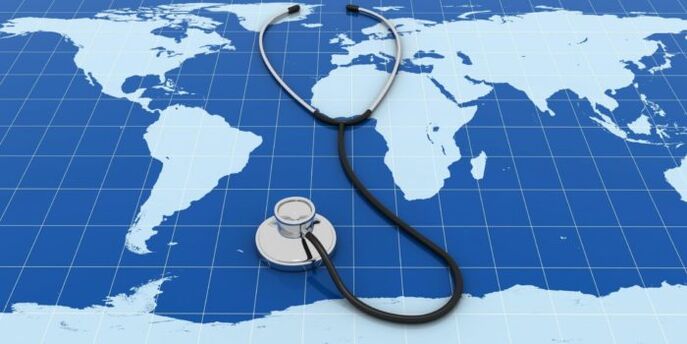
Varicose veins are processes that are irreversible, so complete recovery is almost unattainable.With a timely visit to the doctor, proper diagnosis, preventive measures and treatment, it is quite possible to eliminate the symptoms.
Prevention is quite standard:
- Healthy lifestyle;
- Healthy food;
- Eliminating bad habits;
- If you stay in one position for a long time, do not cross your legs;
- Performing exercises, warming up;
- Occasionally use the services of a massage therapist;
- Wear comfortable clothes as often as possible.
Many no longer pay due attention to the disease, although such carelessness can cost the health of the whole organism. To prevent the development of varicose veins, it is necessary to follow the doctor's recommendations at all stages and carry out prevention.


















